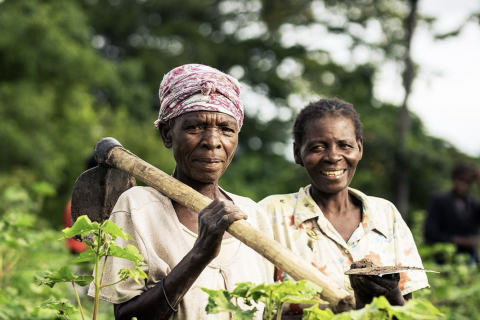According to the document consulted by Lusa, 116,574 cases of cholera and 1,514 deaths were recorded in the first quarter of this year in 25 countries, mainly in Africa, with Angola being the third country in the African region with the most cases and the second with the most deaths since the beginning of the year.
Between January 1 and March 30, 2025, 66,689 cases of cholera were reported in 16 countries in the African region, with emphasis on South Sudan (29,050), the Democratic Republic of the Congo (15,785) and Angola (9,785).
During the same period, there were 1,336 deaths in 14 African countries, with the highest numbers recorded in South Sudan (502), Angola (383) and the Democratic Republic of the Congo (297).
Of the 383 deaths in Angola between January 1 and March 31, 116 occurred in the community (outside hospitals), with a fatality rate of 3.9 percent, the highest in the world, with the disease spread across 17 of Angola's 21 provinces, with the highest number of cases in Luanda (45 percent), Bengo (27 percent) and Icolo e Bengo (9 percent).
Last month alone, Angola reported 4,036 new cases of cholera and 179 associated deaths, with a case fatality rate of 4.4 percent, representing a 10 percent increase in cases and a 23 percent increase in deaths compared to February.
In March 2025, the African region, with 16 countries including Angola and Mozambique, reported 22,372 new cases of cholera, with the highest number recorded in South Sudan (7,709), followed by the Democratic Republic of the Congo (5,679) and Angola (4,036).
In addition to Angola, with 179 deaths, South Sudan also observed a high number of deaths (174), as did the Democratic Republic of Congo (97).
In April, the country reported 5,509 more cases and 147 deaths, totaling 15,294 cases and 530 deaths at the end of last week.
Since the last report, new cholera outbreaks have been reported in Kenya and Namibia, but WHO acknowledges that global data on cholera remains incomplete due to under-reporting and delays in reporting, combined with extreme weather events and conflict in some countries, so that the numbers may be underestimated.
From January 1 to March 30, 2025, 48,619 cases of cholera were also reported in five countries in the Eastern Mediterranean region, the second most affected by the disease. The highest number of cases occurred in Afghanistan (21,533), Yemen (11,507) and Sudan (7894). During the same period, 178 deaths occurred in four countries: Sudan (160), Yemen (9), Afghanistan (8) and Somalia (1).
In the five countries of the Southeast Asian region, a total of 1,266 cases of cholera were reported from January 1 to March 30, 2025, with emphasis on Myanmar (1,096), Nepal (85) and Bangladesh (80), and no deaths were recorded.
According to the WHO, conflict, mass displacement, natural disasters and climate change have intensified outbreaks, especially in rural or flood-affected areas, where poor infrastructure and limited access to health care delay treatment, making cholera outbreaks increasingly difficult to control.
Global stockpiles of oral vaccines reached an average of 5.2 million doses in March, insufficient to meet demand, the United Nations agency highlights.
Due to limited availability of vaccines, only single-dose vaccination campaigns have been approved and implemented, WHO highlights, noting that the growing demand for vaccines continues to exceed supply, severely limiting preventive vaccination campaigns.
“The urgent expansion of vaccine production remains essential,” warns the organization.
Since the beginning of 2025, 13 countries (Angola, Bangladesh, Ethiopia, Ghana, Haiti, Malawi, Mozambique, Myanmar, Niger, Nigeria, South Sudan, Sudan and Zambia) have carried out 24 vaccination campaigns, targeting 13 million people.
The WHO also highlights the challenges that hinder the response to the spread of the disease worldwide, such as the highly infectious nature of cholera, aggravated by disasters caused by natural hazards and climate effects, poor water supply, sanitation and hygiene infrastructure, insufficient vaccines, barriers to the provision of health care, increased risk of cross-border transmission, fuelled by porous borders, inadequate surveillance and poor community awareness, etc.







